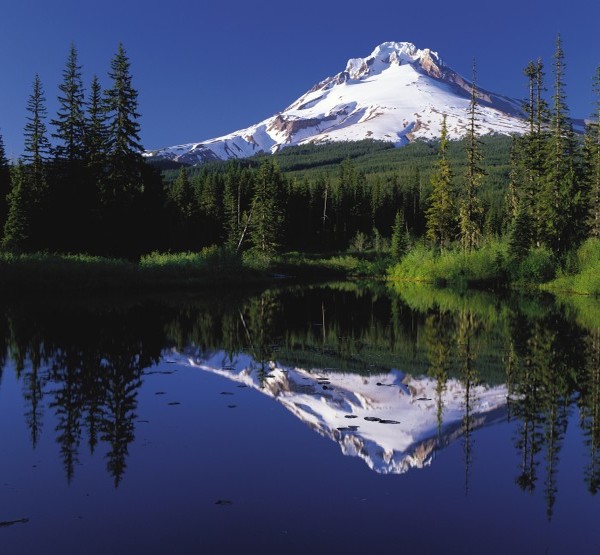ROUTE DANGERS
 ROCK/ICE FALL:
ROCK/ICE FALL:
During the spring and summer, rock fall is the primary danger on the south side, but this can be mitigated somewhat by getting an alpine start (starting anytime from 12-2am). Starting early will help you get up and down the mountain before the sun comes out and the rock fall danger increases. Likewise, in the winter and spring, ice fall danger will increase when the sun comes out. Be sure to be prepared for this by planning to be off the summit before peak rock/ice fall danger time (9am to 1pm) and by wearing a climbing helmet on the upper slopes. All rock and ice should be considered likely to fall, the Cascades are merely rotten rock piles loosely held together by snow, ice or convenience.
CREVASSES:
While rarely discussed, Mt. Hood is a glaciated peak with active crevasses other than the Bergschrund. Be mindful of crevasses above the Palmer and climb in the spring when crevasses are more filled in.
FUMAROLES
Mt. Hood is a living volcano with two active fumarole zones, Hot Rocks and Devil’s Kitchen. These fumaroles release sulphur gas, which smells like rotten eggs. The warmth they provide can be enticing, but do not linger on or near the fumaroles, climbers who do will often experience vomiting, and occasionally die of suffocation. Rest atop the Hogsback near Crater Rock, well away from Hot Rocks and Devils Kitchen, and move steadily through these areas.CORNICES
While more prevalent in the winter and early spring, the cornices have been lingering later into the climbing season due to late snowfall. Cornices can extend up to 40 feet out over the steeper north face, so it is best to stay well back from the edge. Standing on a cornice could cause it to release, sending it and you plummeting down thousands of feet!
AVALANCHES

Mt. Hood Meadows Ski Patrol measuring a 25-foot high side-track of an avalanche near Mt. Hood.
Avalanches are a very real concern on Mt. Hood. Each and every time a climb of Mt. Hood is attempted avalanche conditions should be assessed. The NW Weather and Avalanche Center provides winter forecasts for up to 7000 ft, however, there is currently no reliable avalanche forecasting for the upper parts of Mt. Hood. For winter season climbs, avalanche conditions may always be a concern. After any new snowfall in the spring and summer (with good stability in the existing snowpack) there needs to be 3-4 days with a combination of temperatures above freezing and sun radiation during the day, followed by temperatures below freezing at night, to minimize avalanche risk of avalanches. Shorten that timeline to 36-48 hours if there has been significant rainfall all the way to the top of the mountain.
UNDERESTIMATION
Mt. Hood is often considered an easy hike, a “walk up” by some accounts. While many inexperienced and ill equipped climbers are successful, this is not a climb for those lacking climbing experience. In addition to proper attire and emergency equipment, all climbers should have an ice axe, crampons, sturdy boots and a climbing helmet. A climbing rope, climbing harness and avalanche safety equipment is also strongly recommended depending on conditions. Please remember that it is not enough to have the equipment, you must know how to use it safely and effectively.
OTHER CLIMBERS:
The South Side Route can get very crowded from about Memorial Day through July. This creates a very real risk of dealing with the consequences of unsafe climbers. Climbers may pass you quickly, stop in front of you, fall and slide into you, drop equipment or debris, etc. Whenever there are a lot of climbers together in a relatively small area there is the potential for danger. Follow good climbing etiquette:
-
Move quickly, carefully and efficiently through chutes
-
Yield to uphill traffic while descending
-
Wait behind slower climbers, don’t pass unless they give you the OK
-
Pass quickly and well to the side of other climbers/teams
-
Give other climbers and teams lots of space
-
Travel single file
-
Be patient
-
Be polite

